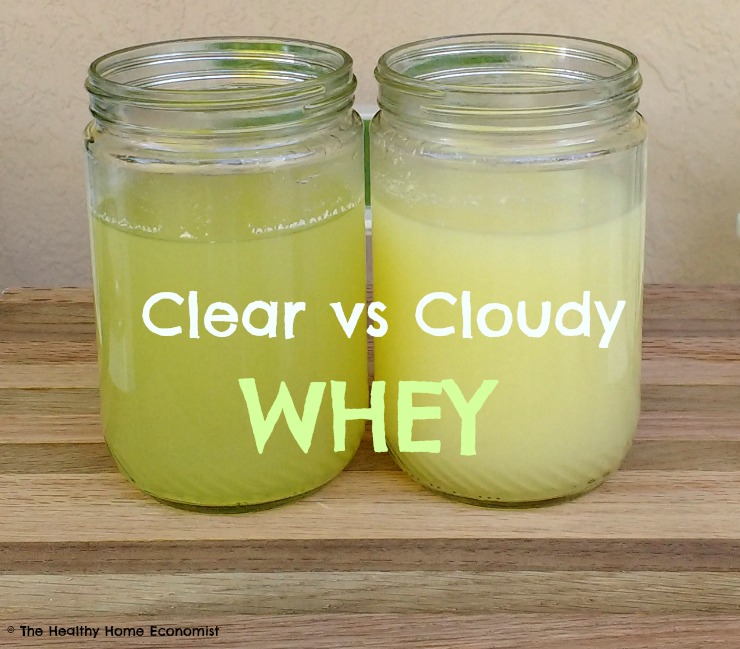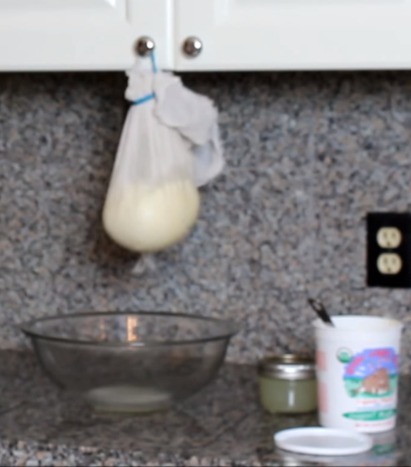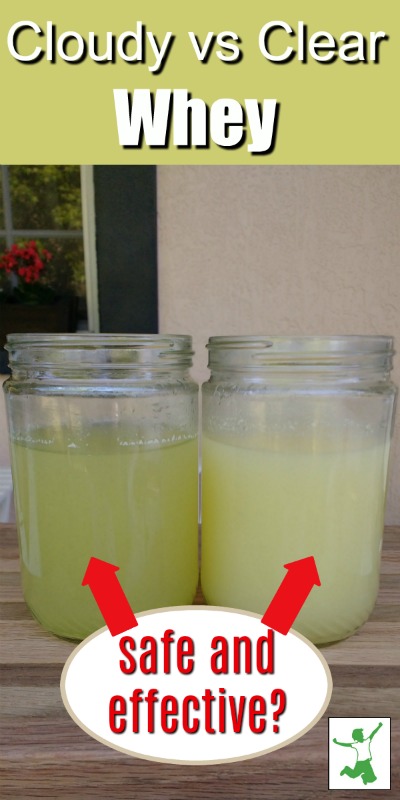
The clear liquid on the top of a newly opened container of plain yogurt is the first experience most people have with whey in its healthiest form.
This golden-colored liquid was recommended for consumption by ancient Greek physicians Galen and most especially Hippocrates, who famously said that “all disease begins in the gut”. A daily dose of the traditional elixir assisted with the restoration of health for those who suffered from gut imbalance and the myriad of illnesses that go along with it. In healthy individuals, whey helps to maintain a balanced internal ecosystem where beneficial rather than pathogenic microbes are in control of the intestinal environment.
In essence, whey was a type of traditional probiotic supplement used for many centuries before factory-produced versions came into vogue.
Whey in Traditional Cooking
Whey is commonly used as the probiotic-rich starter liquid for traditional fermentation recipes and for soaking legumes and grains before cooking to deactivate anti-nutrients, release valuable minerals, and improve digestibility.
It is also an important ingredient in a healthy baby formula recipe made with cow milk, goat milk, and a dairy-free baby formula recipe using bone broth made at home. Whey properly and carefully strained from fermented milk surprisingly does not contain any lactose and is therefore fine for many babies with a dairy intolerance.
Be advised that whey protein powder is never a healthy substitute for the real thing! Even when low temperature processed, protein powder tends to be high in (unlabeled) MSG, a residue from processing, and damaged proteins from powdering. This factory food masquerading as a health food has the potential to exacerbate autoimmune conditions or even trigger new ones over time if consumed on a regular basis.
Fortunately, people are figuring out that protein powder is not such a great idea and are turning to the liquid, whole-food versions naturally found in fermented dairy products like yogurt, kefir, and clabbered raw milk.
Making Liquid Whey (you will probably have to do it yourself)
The biggest problem with whey in its unprocessed form is that you can’t buy it at the store. Even (gasp) Whole Foods or Trader Joe’s don’t carry it.
If you’re lucky, a local raw dairy farm may have this nourishing golden liquid for sale (like mine!). Most of the time, you have to take the time to separate it yourself. This article has a recipe plus video on making raw whey. This article plus video describes the same process separating whey from yogurt. It’s an easy task, so don’t be put off by the DIY approach.
Note that whey leftover from cheesemaking is not the same as liquid separated from cultured dairy products. Cheese whey has been heated and hence has lost the probiotic and enzymatic components that are so beneficial to gut health. This is why it cannot be used for homemade formula either as it will curdle it. Cheese whey does contain many nutrients the same as its more beneficial cousin particularly potassium and vitamin B2 (1). For this reason, cheese whey makes excellent fertilizer for your backyard garden and will attract lots of worms that will improve the soil.
Whey that is Cloudy vs Clear
One of the most common problems people ask when they make liquid whey themselves for the first time is whether cloudy whey is as beneficial as clear, golden whey.
This is a very valid question. I have made whey well over 100 times and have never quite figured out exactly what causes one batch to be cloudy and the next batch clear.

One thing I have noticed is that the first bit of liquid whey separated from a fermented dairy product can frequently be cloudy while the rest will run clear. So, if cloudy whey bothers you, then simply swap a clean bowl underneath the hanging bag of fermented dairy as soon as you notice the liquid passing through the cheesecloth has become clear.
Otherwise, if you don’t have time to babysit the separation process, then rest assured that if the final product is cloudy, it isn’t a problem. It can still be used for fermentation purposes and for homemade baby formula.
Incidentally, the cloudiness is from residual casein milk proteins that escape through the cheesecloth.
Another way to obtain a clear end result is to put the jar full of cloudy whey in the refrigerator. As it settles out, you may notice the residual proteins collecting at the top. At that point, you can carefully lift off the milky white proteins with a slotted spoon or strain for a second time through a cheesecloth.

How To Enjoy the Benefits of Liquid Whey
If you love nourishing liquid whey as I do, perhaps you have wondered how to enjoy its benefits. Here are some great ideas from author Jen Allbritton to inspire you (2):
- Drink it straight or mix it in with a fermented beverage or tea (to add a probiotic boost).
- Freeze it into ice cubes and blend them into smoothies (instead of nasty protein powder!) for a more slushy texture or cool-down a beverage on a hot day.
- Replace a portion of the water used to cook grains.
- Include in the soaking water for legumes and grains to improve digestibility.
- Lacto-ferment almost anything – apples, zucchini, cabbage, cherry chutney, ginger carrots. The books Nourishing Traditions or Wild Fermentation have numerous recipes to choose from.
- Feed to pets – chickens, dogs, cats, they all can benefit from this nourishing liquid.
I also sometimes dilute it by 50% with some cold water, a squeeze of half a lemon or few ounces of orange juice, and a pinch of sea salt for an extremely hydrating, natural Gatorade on the go.








Yes, it does matter and gets more cleared after reading your helpful post. Thank you.
Since I started keeping goats a few years ago I have access to great raw milk. I often make goat cheese (chèvre) where the milk is only heated to 77 degrees or not heated if using fresh from the goat. Since it is low temp I have always assumed the enzymes and probiotics were intact. I have recently started drinking it and of course use it to ferment grains, feed pigs, dogs and even make homemade Gatorade. Goat cheese made by the home producer doesn’t have to be heated to high temps. Only the FDA requires cheese to be pasteurized. It isn’t necessary to produce the cheese.
We’ve found that a Greek yogurt strainer kit that comes with a fine plastic mesh strainer set over a plastic bowl and a secure lid, makes the straining of our raw milk yogurt easier. We have lots of flies around here, so the yogurt and whey are always protected from them.
Overnight in the fridge works perfectly, and because of the lid we can stack things on top of it in our always crowded fridge. The whey drips out into the plastic bowl and I usually pour it into the garden.
My son has a severe eczema due to a dairy intolerance. I currently have him on the raw goat milk formula because he won’t drink the liver option. His naturalpath wants him off dairy completely but he’s only 11 months. She wants to supplement with a pea protein drink which I’m not comfortable with. How do I ferment raw milk to remove the lactose? I would love to see if this helps him! Thank you!
Here is a recipe plus video on how to make kefir from your raw milk. https://www.thehealthyhomeeconomist.com/video-thursday-how-to-make-kefir/
Can it expire? I’ve had raw milk sitting in the back of my fridge for 3 months????. No
Mold or anything, can I still use it?
Thanks for all the tips on how to use whey, I’ve only used it for sauerkraut, but I’m going to start drinking it… We have way too much!!!
Yes you can still use it as long as it isn’t moldy.
How do we calculate the protein content of whey?
I make yogurt and end up with a lot of whey, which I water down greatly and spray onto my garden soil.
As for drinking it, my research (http://nutritiondata.self.com/facts/dairy-and-egg-products/100/2) shows that acid (from yogurt) whey, despite the name, has 13g of sugar, 2 grams of protein and no fat. (Sweet whey has the same values!) While somewhat rich in minerals and other nutrients, liquid whey is a high sugar product and not something I drink. It _IS_ great for making fermented foods.
You wouldn’t be drinking very much! I’m assuming those numbers are for one cup? You would consume at most a few ounces a day which would not be much milk sugar at all … and it is questionable how much sugar is actually left as it is coming from a fermented product anyway.
Hello Sarah,
Appreciate the insightful information.
Question: What knowledge do you have about people with dairy intolerance or being very highly allergic to dairy, even goat’s milk, making and using lacto-fermented veggies ?
If there is a severe dairy allergy, then best to use a nondairy vegetable starter like this one: http://amzn.to/1Vyz9JW
I had no idea powder why protein was bad for you! My husband is a personal trainer so he drinks that every day, which makes me really nervous now. I drink kefir on a regular basis but does drawing the whey out make a difference? Thanks for sharing, Sarah!!
Oh please get him off that stuff! I know sooo many people who regret consuming protein powder for years as they suffer from serious declines in health .. usually weird neurological problems develop. My guess is that it stems from the MSG residue which kills neurons. This book by Dr. Russell Blaylock (a neurosurgeon) details how MSG affects the brain: http://amzn.to/21dtwRe
Hallo
I am very confused so do you think even grass fed raw whey powder are not good?
Thanks a lot I need to know cause consume one
I avoid even grassfed whey powder … grassfed does not alleviate the problems with the processing of whey into a protein powder. Still can have MSG residue and damaged protein structure which contributes to autoimmune woes. I am so shocked more people in the Real Food community aren’t talking about this!
i realy appreciate your answer so even raw grass fed whey powder (actually past. for 15sec as you know)
and what about colagen hydrolyzate??? Many many people advice that
Thanks a lot for clarifying
Collagen hydrolysate is fine. Here is an article from this blog that compares it to gelatin: https://www.thehealthyhomeeconomist.com/gelatin-and-collagen-hydrolysate-whats-the-difference/
I have been making whey for years and can’t figure out why my raw cow or goat milk won’t separate correctly sometimes, even after 2-3 weeks sitting on the counter. I tried making whey with kefir the other day, it worked well. Maybe I’ll have to switch to that.
Yes, making whey with kefir or yogurt is pretty much a failsafe process. Clabbering milk to then separate into whey is a trickier process. I’ve also found that the whey from yogurt or kefir tends to be clear without the cloudiness issue too now that I think about it!